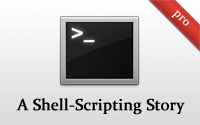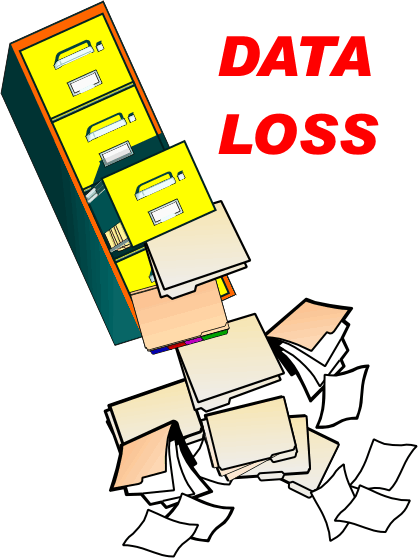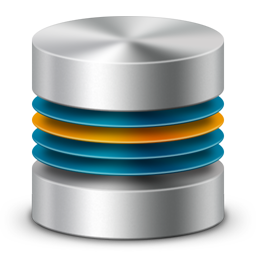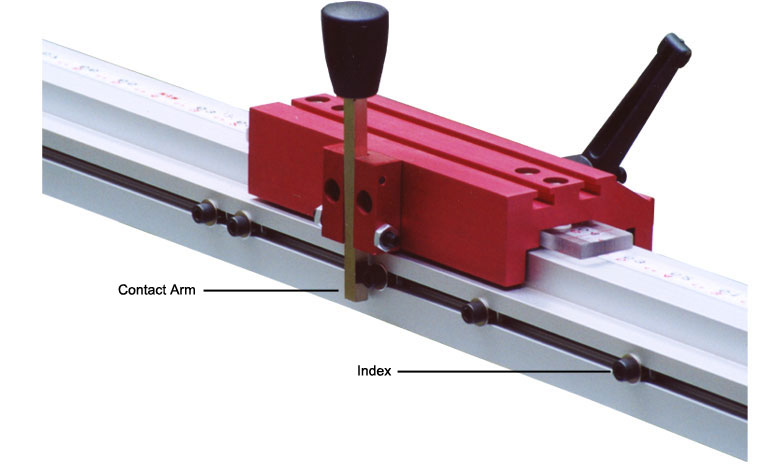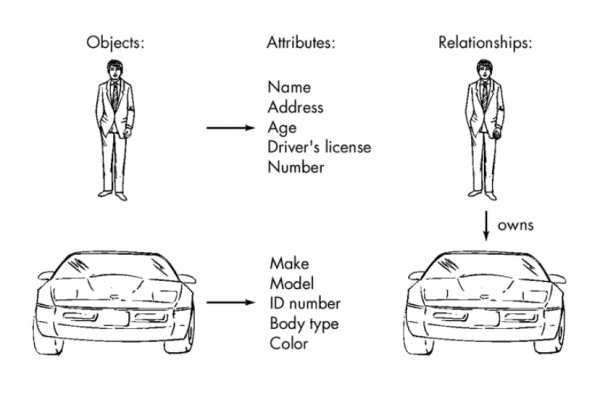PostgreSQL data recovery
The following story is only interesting to read if you like it when bad things happen, or if you don’t have a trustworthy backup policy in place. By trustworthy I mean that each backup you take must be tested with a test recovery job. Only tested backups will prove useful when you need them. So go read our Backup and Restore documentation chapter then learn how to setup Barman for handling physical backups and Point In Time Recovery. Get back when you have proper backups, including recovery testing in place. We are waiting for you. Back? Ok, let’s see how bad you can end up without backups, and how to still recover. With luck.
Did I mention that a trustworthy backup solution includes automated testing of your ability to recover from any and all backup you’ve been taking? That might be more important than you think.
This article is going to be quite long. Prepare yourself a cup of your favorite beaverage.
The Setup
Most of the customers I visit have already laid out a backup strategy and implemented it. Most of them did implement it with custom in-house scripts. They hire high-skilled engineers who have been doing system administration for more than a decade, and who are more than able to throw a shell script at the problem.
Shell scripting must in hindsight be one of the most difficult things to do right, given how many times it turns around doing something else entirely than what the program author though it would. If you want another one of my quite bulk advices, stop doing any shell scripting today: a shell is a nice interactive tool, if you are doing non-interactive scripting, that’s actually called system programming and you deserve a better tool than that.
In our very case, the customer did realize that a production setup had been approved and was running live before any backup solution was in place. Think about it for a minute. If you don’t have tested backups in place, it’s not production ready.
Well, the incident was taken seriously, and the usual backup scripts deployed as soon as possible. Of course, the shell scripts depended in non-obvious ways on some parameters (environment variables, database connections, database setup with special configuration tables and rows). And being a shell script, not much verification that the setup was complete had been implemented, you see.
The Horror Story
And guess what the first thing that backup script is doing? Of course, making sure enough place is available on the file system to handle the next backup. That’s usually done by applying a retention policy and first removing backups that are too old given said policy. And this script too did exactly that.
The problem is that, as some of you already guessed (yes, I see those smiles
trying to hide brains thinking as fast as possible to decide if the same
thing could happen to you too), well, the script configuration had not been
done before entering production. So the script ran without setup, and
without much checking, began making bytes available. By removing any file
more than 5 days old. Right. In.
$PGDATA.
But recently modified are still there, right?
Exactly, not all the files of the database system had been removed. Surely something can be done to recover data from a very small number of important tables? Let’s now switch to the present tense and see about it.
Remember, there’s no
backups. The
archive_command is set though, so that’s a
first track to consider. After that, what we can do is try to start
PostgreSQL on a copy of the remaining
$PGDATA and massage it until it allows
us to
COPY the data out.
The desperate PITR
The
WAL Archive is starting at the file
000000010000000000000009, which
makes it unusable without a corresponding
base backup, which we don’t have.
Well, unless maybe if we tweak the system. We need to first edit the system
identifier, then reset the system to only begin replaying at the file we do
have. With some luck…
Time to try our luck here:
$ export PGDATA=/some/place
$ initdb
$ hexedit $PGDATA/global/pg_control
$ pg_controldata
$ xlogdump /archives/000000010000000000000009
$ pg_resetxlog -f -l 1,9,19 -x 2126 -o 16667 $PGDATA
$ cat > $PGDATA/recovery.conf <<EOF
restore_command = 'gunzip -c /archives/%f.gz > "%p"'
EOF
$ pg_ctl start
Using the transaction data we get from reading the first archive log file we
have with
xlogdump then using
pg_resetxlog and thus accepting to maybe lose
some more data, we still can’t start the system in
archive recovery mode,
because the
system identifier is not the same in the WAL files and in the
system’s
pg_controldata output.
So we tweak our fresh cluster to match, by changing the first 8 bytes of the control file, paying attention to the byte order here. As I already had a Common Lisp REPL open on my laptop, the easier for me to switch from decimal representation of the database system identifier was so:
(format nil "~,,' ,2:x" 5923145491842547187)
"52 33 3D 71 52 3B 3D F3"
Paying attention to the byte order means that you need to edit the control
file’s first 8 bytes in reverse:
F3 3D 3B 52 71 3D 33 52. But in our case,
no massaging seems to allow PostgreSQL to read from the archives we have.
On to massaging what is remaining in the old cluster then.
The Promotion
I’m usually not doing promotion in such a prominent way, but I clearly solved the situation thanks to my colleagues from the 24/7 support at 2ndQuadrant, with a special mention to Andres Freund for inspiration and tricks:
Oh, did I mention about proper backups and how you need to have been successfully testing them before you can call a service in production or have any hope about your recovery abilities? I wasn’t sure I did…
Playing fast and loose with PostgreSQL
The damaged cluster is not starting, for lack of important meta-data kind-of
files. First thing missing is
pg_filenode.map in the
global directory. Using
xlogdump it should be possible to recover just this file if it’s been
changed in the WAL archives we have, but that’s not the case.
pg_filenode.map
As this file is only used for shared relations and some bootstraping
situation (you can’t read current
pg_class file node from
pg_class, as the
file mapping is the information you need to know which file to read), and
knowing that the version on disk was older than 5 days on a cluster recently
put into production, we can allow ourselves trying something: copy the
pg_filenode.map from another fresh cluster.
My understanding is that this file only changes when doing heavy maintenance
on system tables, like
CLUSTER or
VACUUM FULL, which apparently didn’t get
done here.
By the way, here’s one of those tricks I learnt in this exercise. You can read the second and fourth columns as filenames in the same directory:
od -j 8 -N $((512-8-8)) -td4 < $PGDATA/global/pg_filenode.map
So copying default
pg_filenode.map allowed us to pass that error and get to
the next.
pg_clog
Next is the lack of some
pg_clog files. That’s a little tricky because those
binary files contain the
commit log information and are used to quickly
decide if recent transactions are still in flight, or committed already, or
have been rolled back. We can easily trick the system and declare that all
transaction older than 5 days (remember the bug in the
cleanup script was
about that, right?) have in fact been
committed. A commit in the
CLOG is a
01 value, and in a single byte we can stuff as many as 4 transactions'
status.
Here’s how to create those file from scratch, once you’ve noticed that
01010101 is in fact the ascii code for the letter
U.
(code-char #b01010101)
#\U
So to create a series of clog file where all transactions have been committed, so that we can see the data, we can use the following command line:
for c in 0000 0001 0002 0003 0004 0005 0006 0007 0008 0009 000A 000B 000C
do
dd if=/dev/zero bs=256k count=1 | tr '\0' 'U' > $c
done
pg_database
The next step we are confronted to is that PostgreSQL has lost its baking
files for the
pg_database relation and has no idea what are those
directories in
$PGDATA/base supposed to be all about. We only have the
numbers!
That said, the customer still had an history of the commands used to install the database server, so knew in which order the databases where created. So we had an OID to name mapping. How to apply it?
Well
pg_database is a shared catalog and the underlying file apparently
isn’t that easy to hack around, so the easiest solution is to actually hack
the
CREATE DATABASE command and have it accepts a
WITH OIDS option (
OIDS is
already a PostgreSQL keyword,
OID is not, and we’re not going to introduce
new keywords just for that particular patch).
Equiped with that
hacked version of PostgreSQL it’s then possible to use
the new command and create the databases we need with the
OIDS we know.
Those
OIDS are then to be found on-disk in the file where
pg_database is
internally stored, and we can ask the system where that file is:
select oid, relname, pg_relation_filenode(oid)
from pg_class
where relname = 'pg_database';
oid | relname | pg_relation_filenode
------+-------------+----------------------
1262 | pg_database | 12319
(1 row)
Then without surprise we can see:
$ strings $PGDATA/global/12319
postgres
template0
template1
Once that file is copied over to the (running, as it happened) damaged cluster, it’s then possible to actually open a connection to a database. And that’s pretty impressive. But suddenly it didn’t work anymore…
Sytem Indexes
This problem was fun to diagnose. The first
psql call would be fine, but the
second one would always complain with an error you might have never seen in
the field. I sure didn’t before.
FATAL: database "dbname" does not exists
DETAIL: Database OID 17838 now seems to belong to "otherdbname"
Part of PostgreSQL startup is building up some caches, and for that it’s using indexes. And we might have made a mistake, or the index is corrupted, but apparently there’s a mismatch somewhere.
But your now all-time favourite development team knew that would happen to you and is very careful that any feature included in the software is able to bootstrap itself without using any indexes. Or that in bad situations the system knows how to resist the lack of those indexes by turning the feature off, which is the case for Event Triggers for example, as you can see in the commit cd3413ec3683918c9cb9cfb39ae5b2c32f231e8b.
So yes, it is indeed possible to start PostgreSQL and have that marvellous production ready system avoid any system indexes, for dealing with cases where you have reasons to think those are corrupted… or plain missing.
$ pg_ctl start -o "-P"
$ cat > $PGDATA/postgresql.conf <<EOF
enable_indexscan = off
enable_bitmapscan = off
enable_indexonlyscan = off
EOF
$ pg_ctl reload
While at it, we edit the
postgresq.conf and adjust some index usage related
settings, as you can see, because this problem will certain happen outside
of the system indexes.
If you’re not using (only) PostgreSQL as your database system of choice, now is the time to check that you can actually start those other systems when their internal indexes are corrupted or missing, by the way. I think that tells a lot about the readiness of the system for production usage, and the attitude of the developpers towards what happens in
So we now have a running PostgreSQL service, servicing the data that still is available. Well, not quite, We have a PostgreSQL service that accepts to start and allows connections to a specific database.
pg_proc, pg_operator, pg_cast, pg_aggregate, pg_amop and others
The first query I did try on the new database was against
pg_class to get
details about the available tables. The
psql command line tool is doing a
large number of queries in order to serve the
\d output, the
\dt one is
usable in our case.
To know what queries are sent to the server by
psql commands use the
\set ECHO_HIDDEN toggle.
About any query is now complaining that the target database is missing
files. To understand which file it is, I used the following query in a fresh
cluster. The following example is about an error message where
base/16384/12062 is missing:
select oid, relname, pg_relation_filenode(oid)
from pg_class
where pg_relation_filenode(oid) = 12062;
oid | relname | pg_relation_filenode
------+---------+----------------------
1255 | pg_proc | 12062
(1 row)
In our specific case, no extensions were used. Check that before taking action here, or at least make sure that the tables you want to try and recover data from are not using extensions, that would make things so much more complex.
Here we can just use default settings for most of the system catalogs: we are using the same set of functions, operators, casts, aggregates etc as any other 9.2 system, so we can directly use files created by initdb and copy them over where the error message leads.
pg_namespace
Some error messages are about things we should definitely not ignore. The
content of the
pg_namespace relation was lost on about all our databases,
and the application here were using non default schema.
To recover from that situation, we need to better understand how this relation is actually stored:
# select oid, * from pg_namespace;
oid | nspname | nspowner | nspacl
-------+--------------------+----------+----------------------
99 | pg_toast | 10 |
11222 | pg_temp_1 | 10 |
11223 | pg_toast_temp_1 | 10 |
11 | pg_catalog | 10 | {dim=UC/dim,=U/dim}
2200 | public | 10 | {dim=UC/dim,=UC/dim}
11755 | information_schema | 10 | {dim=UC/dim,=U/dim}
(6 rows)
# copy pg_namespace to stdout with oids;
99 pg_toast 10 \N
11222 pg_temp_1 10 \N
11223 pg_toast_temp_1 10 \N
11 pg_catalog 10 {dim=UC/dim,=U/dim}
2200 public 10 {dim=UC/dim,=UC/dim}
11755 information_schema 10 {dim=UC/dim,=U/dim}
So it’s pretty easy here, actually, when you make the right connections:
let’s import a default
pg_namespace file then append to it thanks to
COPY IN, being quite careful about using
tabs (well, unless you use the
delimiter
option of course):
# copy pg_namespace from stdin with oids;
Enter data to be copied followed by a newline.
End with a backslash and a period on a line by itself.
>> 16443 my_namespace 10 \N
>> \.
And now there’s a new
schema in there with the
OID we want. Wait, how do we
figure out the OID we need?
# select c.oid, relname, relnamespace, nspname
from pg_class c left join pg_namespace n on n.oid = c.relnamespace
where relname = 'bar';
oid | relname | relnamespace | nspname
-------+---------+--------------+---------
16446 | bar | 16443 |
(1 row)
So in the result of that query we have no
nspname, but we happen to know
that the table
bar is supposed to be in the schema
my_namespace.
And believe it or not, that method actually allows you to create a schema in
a database in a running cluster. We directly are editing the catalog files
and editing even the
OID of the rows we are injecting.
The reason we couldn’t do that with
pg_database, if you’re wondering about
that, is that
pg_database is a shared catalog and part of the bootstrapping,
so that it was impossible to start PostgreSQL until we fix it, and the only
implementation of
COPY we have requires a running PostgreSQL instance.
pg_attributes and pg_attrdef
So now we are able to actually refer to the right relation in a SQL command, we should be able to dump its content right? Well, it so happens that in some case it’s ok and in some cases it’s not.
We are very lucky in that exercise in that
pg_attribute is not missing. We
might have been able to rebuild it thanks to some
pg_upgrade implementation
detail by forcing the
OID of the next table to be created and then issuing
the right command, as given by
pg_dump. By the way, did I mention about
backups? and automated recovery tests?
In some cases though, we are missing the
pg_attrdef relation, wholesale.
That relation is used for default expressions attached to columns, as we can
see in the following example, taken on a working database server:
# \d a
Table "public.a"
Column | Type | Modifiers
--------+---------+------------------------------------------------
id | integer | not null default nextval('a_id_seq'::regclass)
f1 | text |
Indexes:
"a_pkey" PRIMARY KEY, btree (id)
# select adrelid, adnum, adsrc
from pg_attrdef
where adrelid = 'public.a'::regclass;
adrelid | adnum | adsrc
---------+-------+-------------------------------
16411 | 1 | nextval('a_id_seq'::regclass)
(1 row)
# select attnum, atthasdef
from pg_attribute
where attrelid = 'public.a'::regclass
and atthasdef;
attnum | atthasdef
--------+-----------
1 | t
(1 row)
We need to remember that the goal here is to salvage some data out of an installation where lots is missing, it’s not at all about being able to ever use that system again. Given that, what we can do here is just ignore the default expression of the columns, by directly updating the catalogs:
# update pg_attribute
set atthasdef = false
where attrelid = 'my_namespace.bar';
COPY the data out! now!
At this point we are now able to actually run the
COPY command to store the
interesting data into a plain file, that is going to be usable on another
system for analysis.
Not every relation from the get go, mind you, sometime some default catalogs are still missing, but in that instance of the data recovery we were able to replace all the missing pieces of the puzzle by just copying the underlying files as we did in the previous section.
Conclusion
Really, PostgreSQL once again surprises me by its flexibility and resilience. After having tried quite hard to kill it dead, it was still possible to actually rebuild the cluster into shape piecemeal and get the interesting data back.
I should mention, maybe, that with a proper production setup including a Continuous Archiving and Point-in-Time Recovery solution such as pgbarman, walmgr, OmniPITR or PITRtools; the recovery would have been really simple.
Using an already made solution is often better because they don’t just include
It’s even one of those rare cases where using PostgreSQL replication would have been a solution: the removing of the files did happen without PostgreSQL involved, it didn’t know that was happening and wouldn’t have replicated that to the standby.

